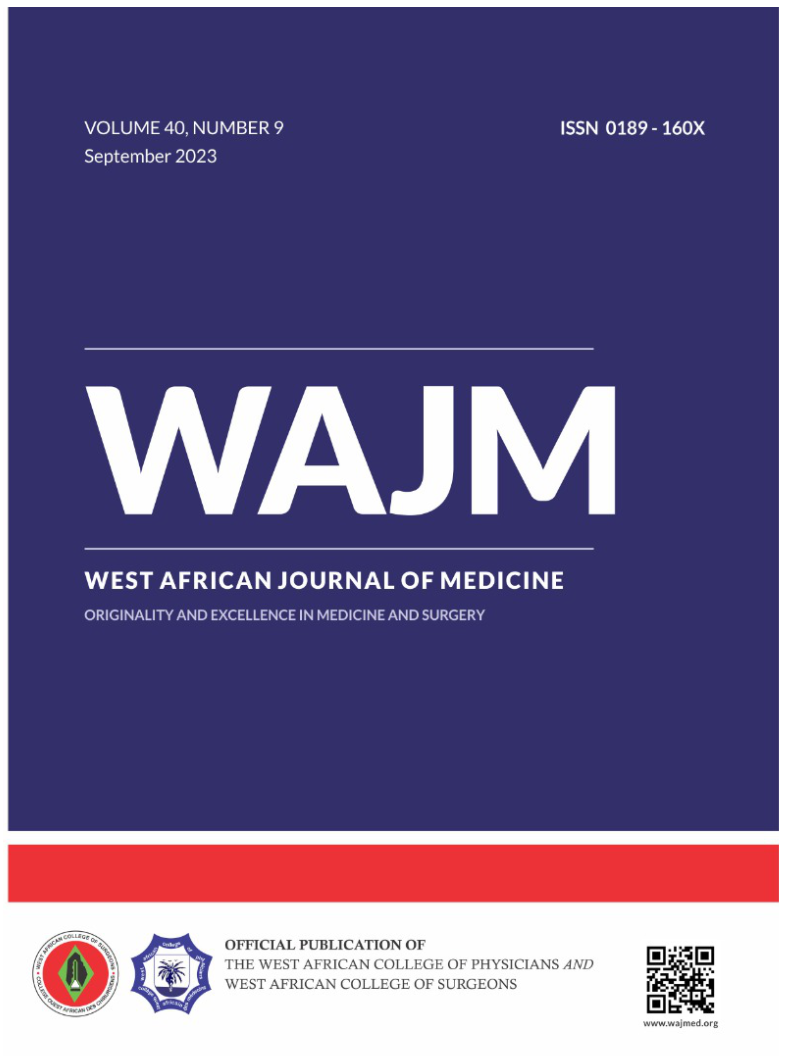ORIGINAL ARTICLE Antibiotic Guidelines for Critically Ill Patients in Nigeria
West Afr J Med. September 2023; 40 (9): 962-972
Keywords:
Antibiotic stewardship, Antimicrobial resistance, Antimicrobials, Critical care, Guidelines, Healthcare associated infections, Intensive care unitAbstract
Background: It is well documented that inappropriate use of antimicrobials is the major driver of antimicrobial resistance. To combat this, antibiotic stewardship has been demonstrated to reduce antibiotic usage, decrease the prevalence of resistance, lead to significant economic gains and better patients' outcomes. In Nigeria, antimicrobial guidelines for critically ill patients in intensive care units (ICUs), with infections are scarce. We set out to develop antimicrobial guidelines for this category of patients.
Methods: A committee of 12 experts, consisting of Clinical Microbiologists, Intensivists, Infectious Disease Physicians, Surgeons, and Anesthesiologists, collaborated to develop guidelines for managing infections in critically ill patients in Nigerian ICUs. The guidelines were based on evidence from published data and local prospective antibiograms from three ICUs in Lagos, Nigeria. The committee considered the availability of appropriate antimicrobial drugs in hospital formularies. Proposed recommendations were approved by consensus agreement among committee members.
Results: Candida albicans and Pseudomonas aeruginosa were the most common microorganisms isolated from the 3 ICUs, followed by Klebsiella pneumoniae, Acinetobacter baumannii, and Escherichia coli. Targeted therapy is recognized as the best approach in patient management. Based on various antibiograms and publications from different hospitals across the country, amikacin is recommended as the most effective empiric antibiotic against Enterobacterales and A. baumannii, while colistin and polymixin B showed high efficacy against all bacteria. Amoxicillin-clavulanate or ceftriaxone was recommended as the first-choice drug for community-acquired (CA) CA-pneumonia while piperacillin-tazobactam + amikacin was recommended as first choice for the treatment of healthcare-associated (HA) HA-pneumonia. For ventilatorassociated pneumonia (VAP), the consensus for the drug of first choice was agreed as meropenem. Amoxycillin-clavulanate +clindamycin was the consensus choice for CAskin and soft tissue infection (SSIS) and piperacillin-tazobactam + metronidazole ±vancomycin for HA-SSIS. Ceftriaxone-tazobactam or piperacillin-tazobactam + gentamicin was consensus for CA-blood stream infections (BSI) with first choice+regimen for HA-BSI being meropenem/piperacillin-tazobactam +amikacin +fluconazole. For community-acquired urinary tract infection (UTI), first choice antibiotic was ciprofloxacin or ceftriaxone with a catheter-associated UTI (CAUTI) regimen of first choice being meropenem + fluconazole.
Conclusion: Data from a multicenter three ICU surveillance and antibiograms and publications from different hospitals in the country was used to produce this evidence-based Nigerian-specific antimicrobial treatment guidelines of critically ill patients in ICUs by a group of experts from different specialties in Nigeria. The implementation of this guideline will facilitate learning, continuous improvement of stewardship activities and provide a baseline for updating of guidelines to reflect evolving antibiotic needs.


